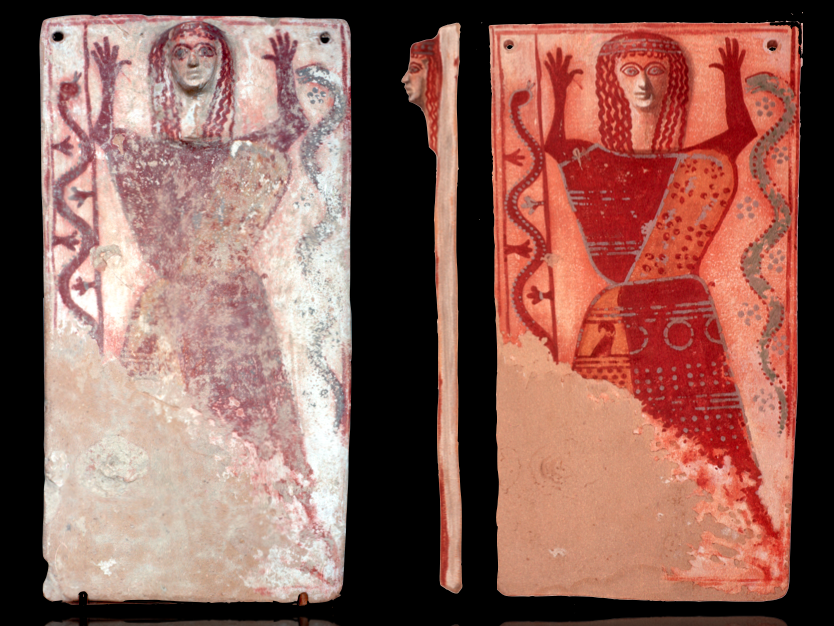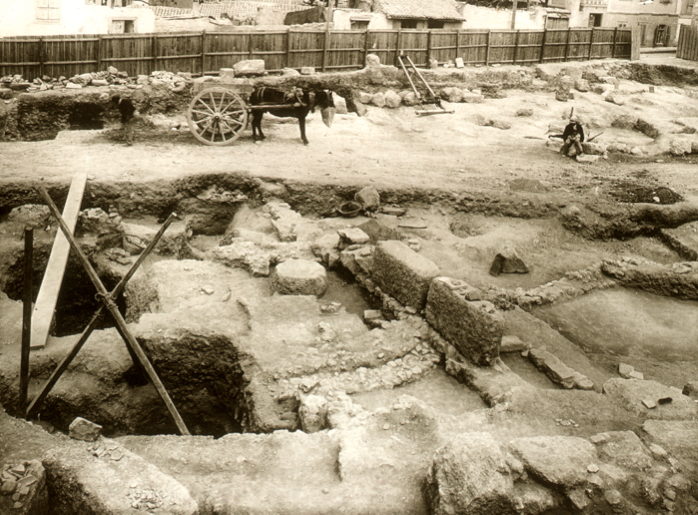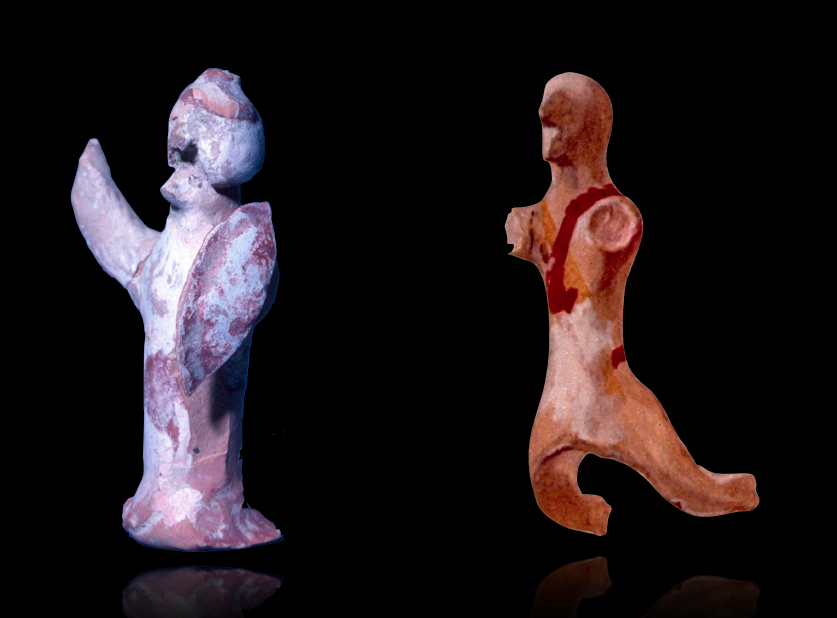Athenian 'Snake Goddess' Gets New Identity

SEATTLE - A mysterious "snake goddess" painted on terracotta and discovered in Athens may actually be Demeter, the Greek goddess of the harvest.
Once linked to the worship of the dead, the goddess is flanked by two snakes on a slab of terracotta about the size of a piece of notebook paper. She has her hands up above her head, which has given her the nickname "the touchdown goddess" thanks to the resemblance of the pose to a referee's signal. The goddess is painted in red, yellow and blue-green on a tile, with only her head molded outward in three dimensions. This unusual piece of art was found amid a jumble of gravel and other terracotta fragments in 1932 in what was once the Athenian agora, or public square.
The catch, however, is that the snake goddess isn't originally from the agora. The gravel and figurine fragments were fill material, brought in from an unknown second location to build a path or road in the seventh century B.C.
"Not only is our snake goddess unidentified, but she's homeless," said study researcher Michael Laughy of Washington and Lee University in Virginia. "She got mixed up in that road gravel, presumably obtained near the site of her original shrine."

Forgotten offering
Along with the snake goddess plaque, the road fill contains small terracotta figurines, or votives, of humans, chariots, shields, loom weights, portions of spindles and pottery disks, most of which individually could fit in the palm of a hand. The terracotta figurines were used during this time period as offerings at the sanctuaries of gods and goddesses, Laughy told LiveScience after presenting his findings here at the annual meeting of the Archaeological Institute of America. [See Images of the Mystery Figurines & Snake Goddess]
Normally, he said, the votive offerings were considered somewhat sacred, and once cleared from sanctuaries would be buried and left undisturbed in a pit. Thus, although it's typical to see artifacts out of place in Athens, which has been built over for thousands of years, it's strange to see votives used as road fill, Laughy said.
Sign up for the Live Science daily newsletter now
Get the world’s most fascinating discoveries delivered straight to your inbox.
Tracing the source of this fill is a difficult task. Previously, archaeologists have assumed the figurines originated from the worship of the dead, linking the items found in Athens to ones found at a Bronze Age tomb outside the city. But the items at that tomb don't match all those found in the Athens agora, Laughy said.
Displaced goddess
More Likely, according to Laughy's analysis, the snake-flanked woman is both a representation of and an offering to a goddess. Votive deposits from the shrines of goddesses include pottery disks, terracotta horses, plaques and shields, as well as female figurines. These votives match the finds uncovered in Athens.

In particular, shrines devoted to Demeter and Athena, the goddess of wisdom and war, show the closest matches to the types of figurines found, Laughy said.
Demeter is a strong candidate, as there was a shrine built in her name in the seventh century mere minutes-long walk from the Athens agora, he said. It's the only sanctuary where ancient Greeks are known to have left loom weights and spindle whorls, which are disks that weigh down spindles used for spinning thread and which are found in the Athens fill debris. What's more, Laughy said, the spot was graded in the seventh century, which could have produced a debris pile that was then carted away to make paths in the agora.
Finally, the goddess' serpentine companions also point to Demeter, who was particularly associated with snake iconography, Laughy said.
"Snakes and Demeter are happy together in imagery in the seventh century," he said.
Laughy warned that the evidence linking the snake goddess and Demeter is circumstantial. However, he said, the evidence is strong that the woman is not a figure associated with death, but a goddess. If she were Demeter, the snake goddess plaque would be one of the oldest images ever found of that particular deity.
Either way, the snake goddess is "striking," Laughy said. It's one of the earliest multicolor paintings found in Athens
"It's an amazing piece of work," he said.
Follow Stephanie Pappas on Twitter @sipappas or LiveScience @livescience. We're also on Facebook & Google+.

Stephanie Pappas is a contributing writer for Live Science, covering topics ranging from geoscience to archaeology to the human brain and behavior. She was previously a senior writer for Live Science but is now a freelancer based in Denver, Colorado, and regularly contributes to Scientific American and The Monitor, the monthly magazine of the American Psychological Association. Stephanie received a bachelor's degree in psychology from the University of South Carolina and a graduate certificate in science communication from the University of California, Santa Cruz.









